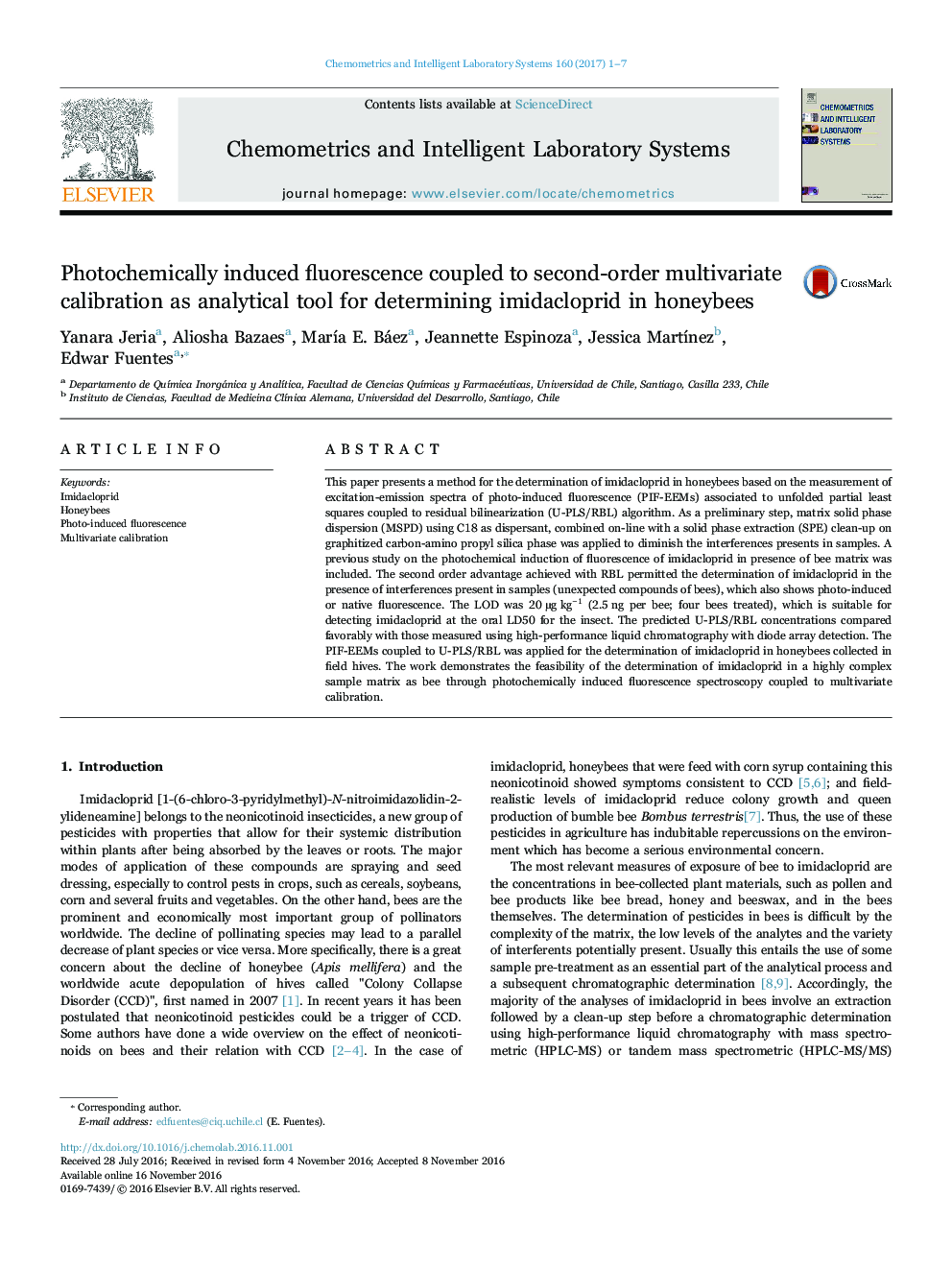| Article ID | Journal | Published Year | Pages | File Type |
|---|---|---|---|---|
| 5132271 | Chemometrics and Intelligent Laboratory Systems | 2017 | 7 Pages |
â¢Photo-induced fluorescence and UPLS/RBL allows determining imidacloprid in bees.â¢MSPD-SPE was applied to diminish the interferences.â¢The method is satisfactorily compared with the HPLC-DAD method.
This paper presents a method for the determination of imidacloprid in honeybees based on the measurement of excitation-emission spectra of photo-induced fluorescence (PIF-EEMs) associated to unfolded partial least squares coupled to residual bilinearization (U-PLS/RBL) algorithm. As a preliminary step, matrix solid phase dispersion (MSPD) using C18 as dispersant, combined on-line with a solid phase extraction (SPE) clean-up on graphitized carbon-amino propyl silica phase was applied to diminish the interferences presents in samples. A previous study on the photochemical induction of fluorescence of imidacloprid in presence of bee matrix was included. The second order advantage achieved with RBL permitted the determination of imidacloprid in the presence of interferences present in samples (unexpected compounds of bees), which also shows photo-induced or native fluorescence. The LOD was 20 µg kgâ1 (2.5 ng per bee; four bees treated), which is suitable for detecting imidacloprid at the oral LD50 for the insect. The predicted U-PLS/RBL concentrations compared favorably with those measured using high-performance liquid chromatography with diode array detection. The PIF-EEMs coupled to U-PLS/RBL was applied for the determination of imidacloprid in honeybees collected in field hives. The work demonstrates the feasibility of the determination of imidacloprid in a highly complex sample matrix as bee through photochemically induced fluorescence spectroscopy coupled to multivariate calibration.
